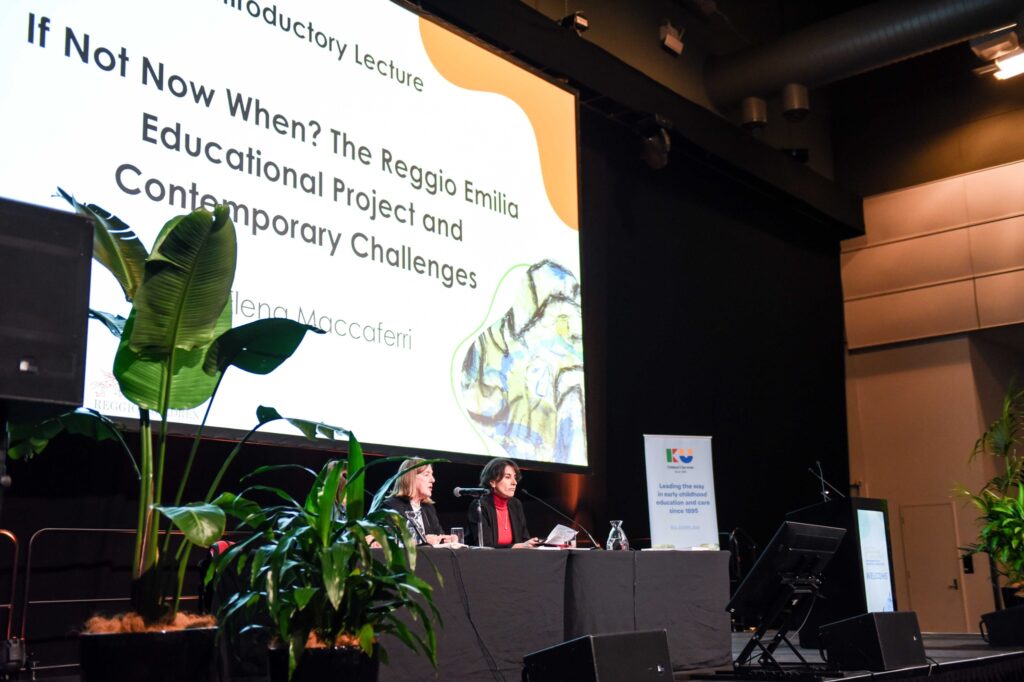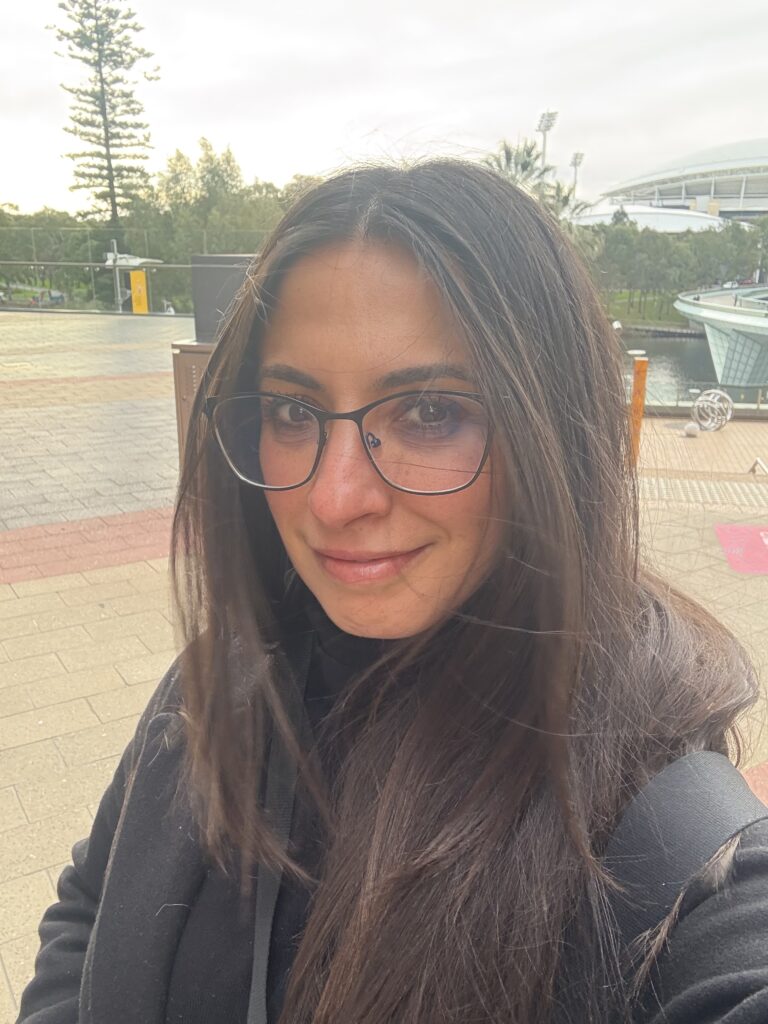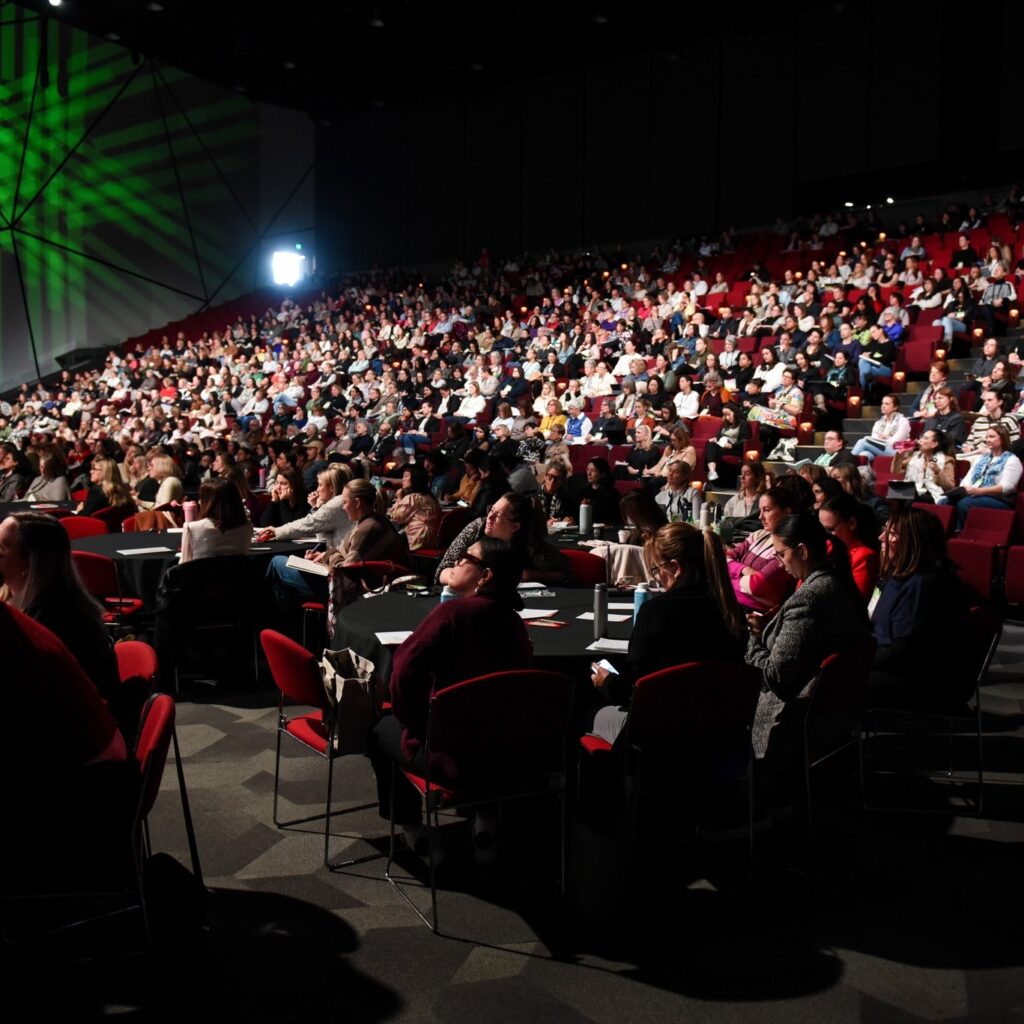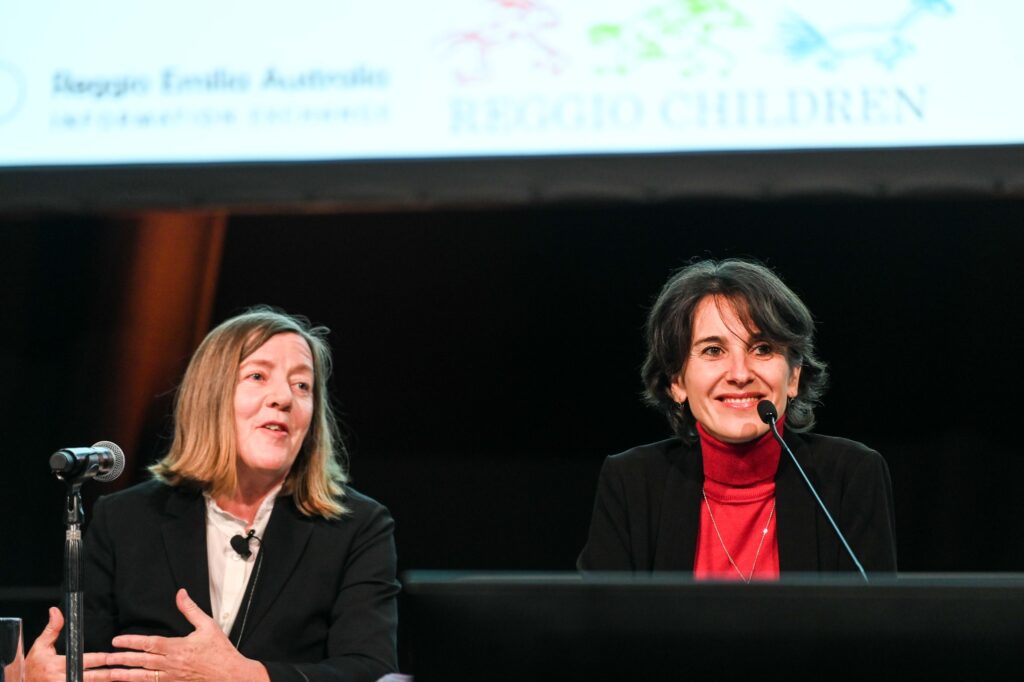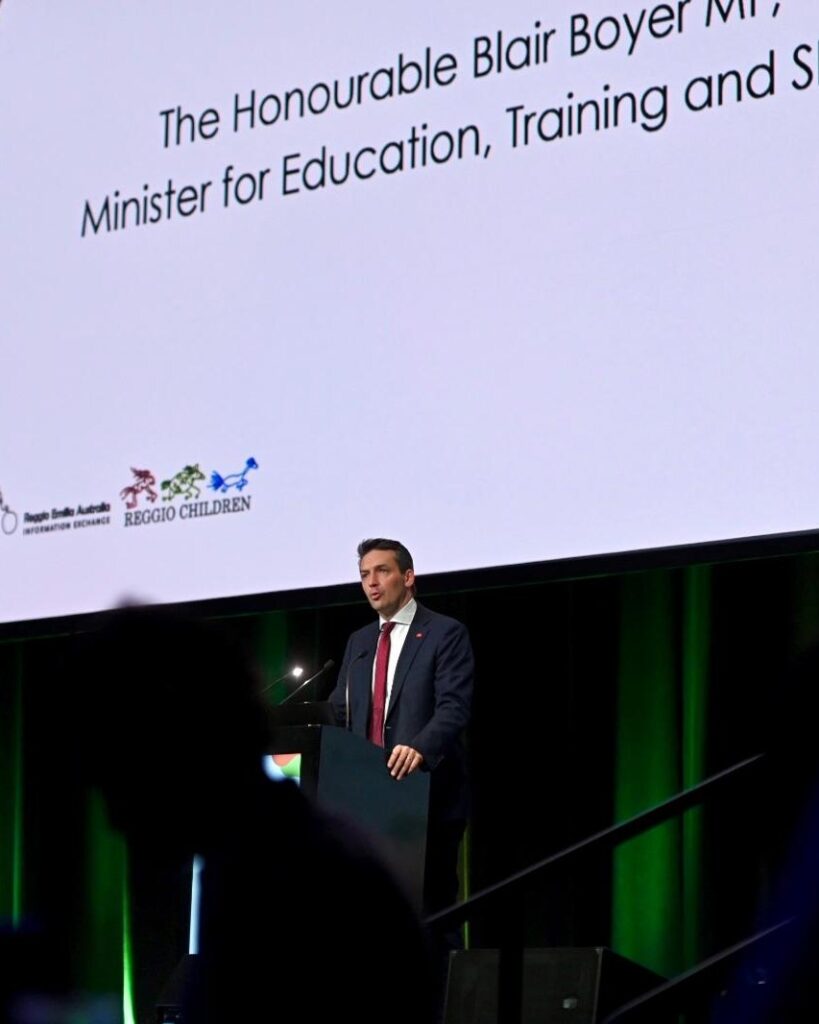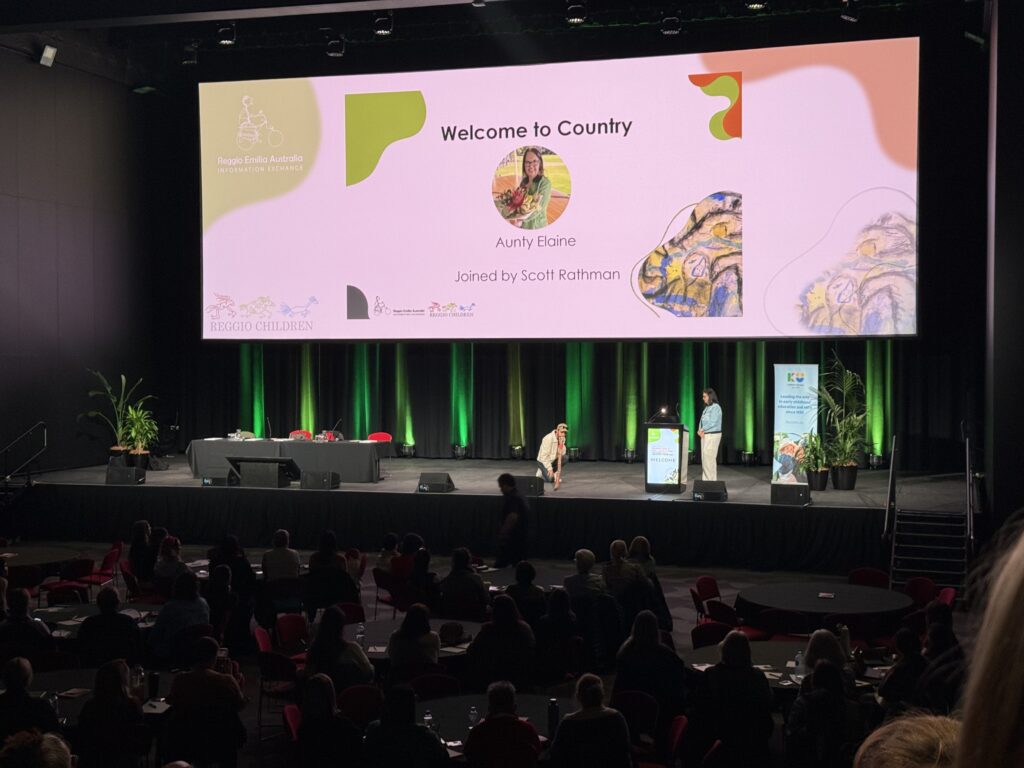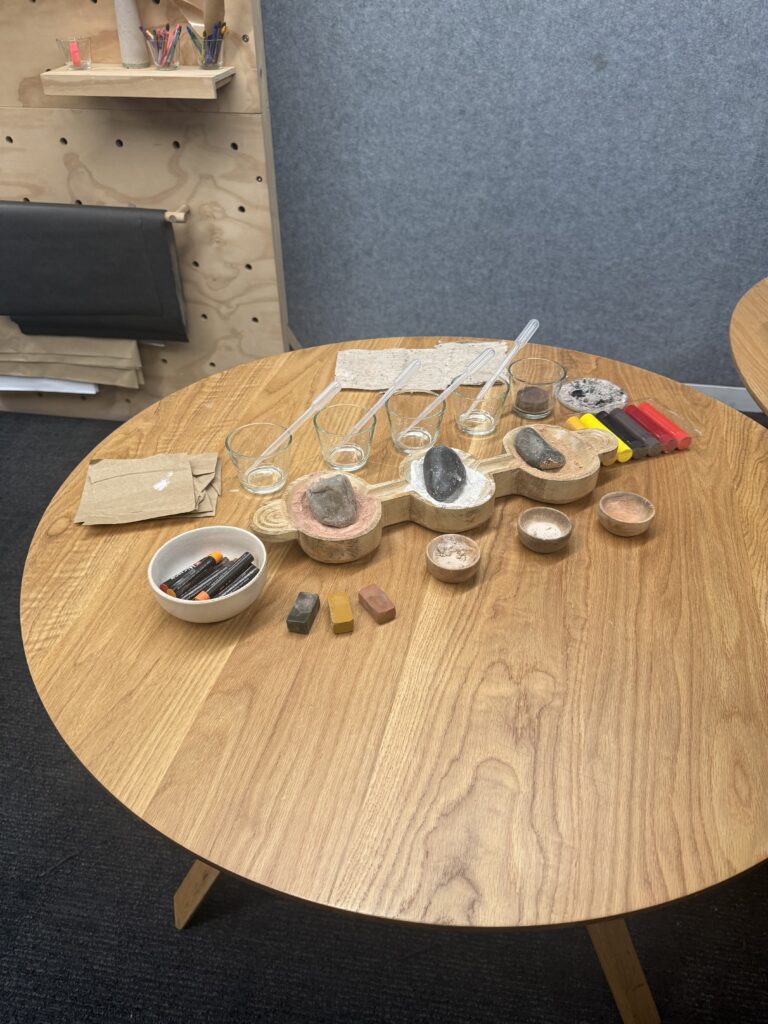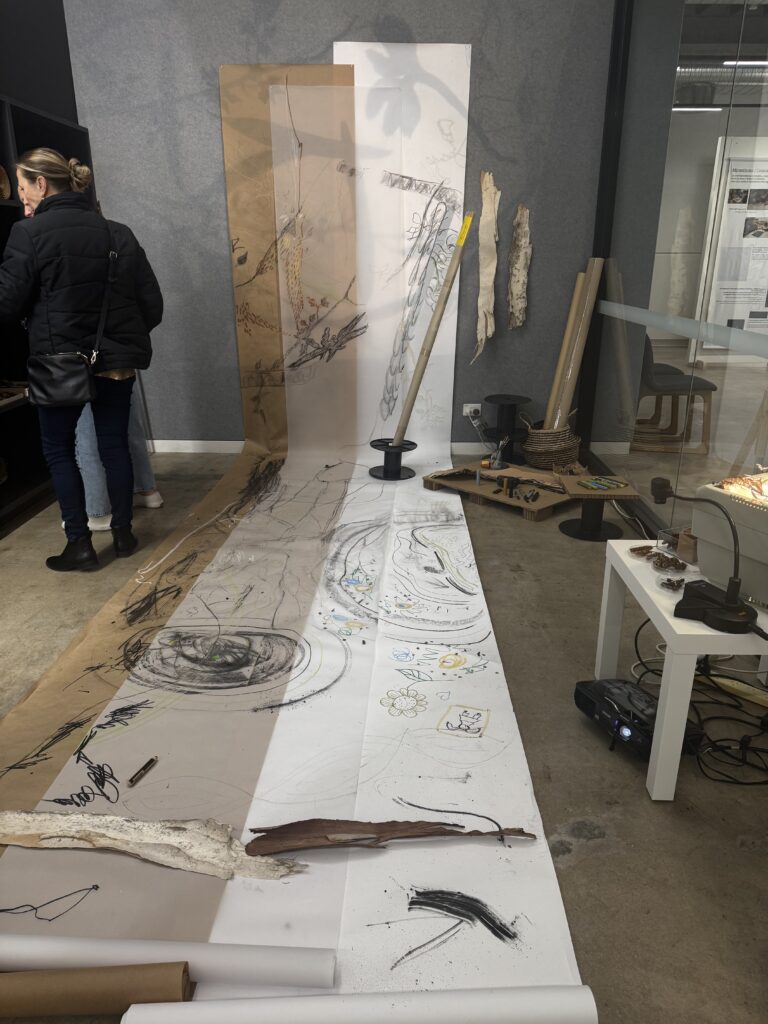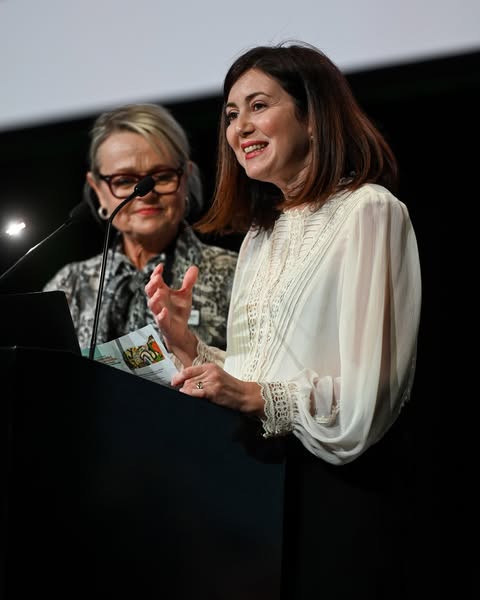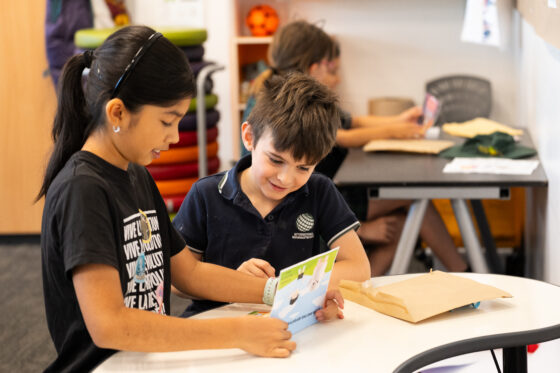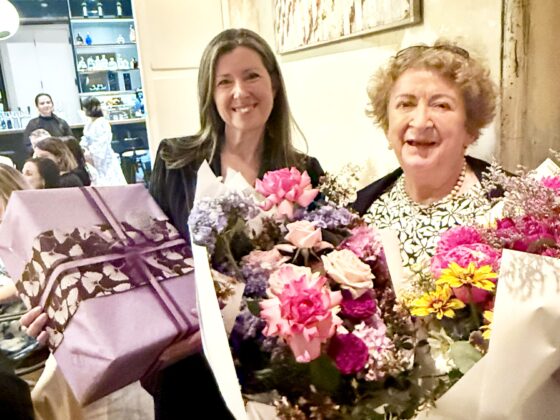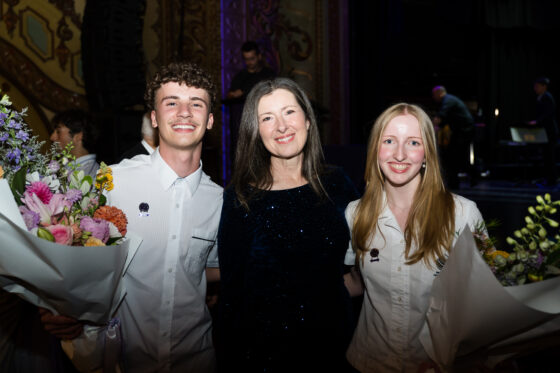During Term Break, I had the privilege of attending the Reggio Emilia Australia Information Exchange (REAIE) 2025 Conference in Adelaide, titled Landscapes of Collaboration: New Possibilities for Education in Complex Times. The conference brought together educators, researchers, and advocates from across the country to consider how schools and early childhood settings can respond to the growing complexity of the world with courage, creativity, and collaboration.
Keynote speakers Elena Maccaferri (Pedagogista) and Consuelo Damasi (Atelierista) offered wonderful insights drawn from their work in the infant toddler centres, preschools, and primary schools of the municipality of Reggio Emilia, Italy. What stood out most in their presentations was the belief that education should not avoid complex social, political, or environmental challenges—but rather engage with them openly and respectfully, with children as active participants.
Elena and Consuelo shared how all adults working with children have a shared vision and see complexity not as something to simplify for children, but as a rich context for learning. Whether navigating the fast-changing dynamics of urban living or addressing issues such as inclusion, identity, and support for LGBTQIA+ communities, Reggio schools listen deeply to children’s questions, theories, and perspectives. These conversations aren’t abstract—they are rooted in children’s real experiences and expressed through what Reggio calls the “hundred languages”: drawing, movement, sculpture, storytelling, and more.
The courage to engage with complexity is grounded in a deep respect for children’s capacity to think, feel, and contribute meaningfully to their world. One powerful example shared by the speakers involved children exploring how cities shape relationships—how buildings, streets, and spaces either invite or exclude. Another focused on children expressing understandings of family and identity through long-term, collaborative art projects. In both cases, educators didn’t impose meaning but instead responded thoughtfully to the children’s interpretations and inquiries.
These stories prompted me to reflect on my own practice. How often do we, as educators, unintentionally filter or soften complexity in the name of protection or manageability? The Reggio approach invites us to do the opposite—to slow down, to trust children’s thinking, and to see education as a process of co-construction, not transmission.
A highlight of the conference was visiting the Mosaic of Marks, Words, and Materials exhibition—a powerful documentation of research conducted in the infant toddler centres and preschools of Reggio Emilia. The exhibition traces how children explore mark-making not just as early writing or drawing, but as a way of understanding and representing the world around them. It was an insightful experience to witness the learning from the children through the lens of ‘the hundred languages’. The “Mosaic of Marks, Words, and Materials” exhibition will be on display at Marrickville Library in Sydney from 30 August to 22 September. This exhibition offers a unique opportunity to explore the educational philosophy and pedagogical practices of Reggio Emilia. I highly recommend a visit with children and families.
The REAIE Conference reminded me that collaboration is essential to supporting and enriching children’s learning. When we view children as capable citizens and work in partnership with families and one another, we can navigate complexity with resilience, empathy, and collective strength within our learning environments.
